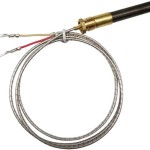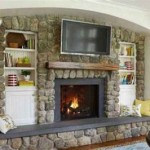Gas Fireplace Services and Repairs: Ensuring Safety and Efficiency
Gas fireplaces offer a convenient and aesthetically pleasing alternative to traditional wood-burning fireplaces. They provide instant warmth with the flick of a switch, eliminating the need for wood storage and ash removal. However, like any gas appliance, regular maintenance and timely repairs are crucial to ensure safe and efficient operation. This article will delve into the various aspects of gas fireplace services and repairs, highlighting the importance of professional expertise and preventative measures.
Understanding the Components of a Gas Fireplace
A gas fireplace comprises several key components working in harmony. These include the gas valve, which regulates the flow of gas to the burner; the burner itself, where the gas mixes with air and combusts to produce flames; the pilot light or electronic ignition system, which ignites the gas; the thermocouple or thermopile, which senses the presence of the pilot light and allows the main gas valve to open; the vent or chimney, which expels combustion byproducts; and the firebox, which contains the flames and radiates heat. Each component plays a vital role, and a malfunction in any one of them can affect the fireplace's performance or create a safety hazard.
The gas valve is essentially the control center of the fireplace. It regulates the amount of gas flowing into the burner assembly based on the thermostat setting or manual control knob. A faulty gas valve can cause issues such as a weak flame, no flame at all, or gas leaks. The burner is designed with specific porting and mixing chambers to ensure proper combustion and prevent the formation of carbon monoxide. Corrosion, clogs, or damage to the burner can disrupt the flame pattern and reduce heating efficiency.
The pilot light or electronic ignition system provides the initial spark to ignite the gas. Pilot lights are continuously burning small flames that are more prone to going out and need to be relit. Electronic ignition systems use an electric spark to ignite the gas and are more reliable. The thermocouple or thermopile is a safety device. If the pilot light goes out, the thermocouple/thermopile cools down, which then shuts off the main gas valve to prevent a gas buildup. A faulty thermocouple/thermopile is a common cause of gas fireplace problems.
The venting system is critical for removing combustion byproducts, such as carbon dioxide and water vapor, from the fireplace and directing them outside. Blocked or damaged vents can cause these byproducts to accumulate inside the home, posing a serious health risk. The firebox is the enclosure that contains the flames and radiates heat into the room. It is typically made of metal or ceramic materials and is designed to withstand high temperatures. Cracks or damage to the firebox can compromise its structural integrity and reduce its heating efficiency.
Common Gas Fireplace Problems and Troubleshooting
Gas fireplaces, while relatively low-maintenance, can experience a range of problems over time. Some common issues include the pilot light not staying lit, the fireplace not turning on, a weak or flickering flame, unusual odors, and excessive soot buildup. Understanding the potential causes of these problems can help homeowners troubleshoot basic issues and determine when professional assistance is needed.
A pilot light that repeatedly goes out could be caused by a dirty pilot light orifice, a faulty thermocouple/thermopile, or a draft. Cleaning the pilot light orifice with a small wire brush or compressed air can sometimes resolve the issue. If the thermocouple/thermopile is faulty, it will need to be replaced. Drafts can be minimized by sealing any gaps around the fireplace or adjusting the damper.
If the fireplace fails to turn on, the problem could stem from a faulty gas valve, a malfunctioning ignition system, or a tripped circuit breaker. Checking the circuit breaker is a simple first step. If the ignition system is not sparking, it may need to be cleaned or replaced. A faulty gas valve requires professional diagnosis and repair.
A weak or flickering flame can indicate a low gas pressure, a dirty burner, or a blocked vent. Checking the gas supply is essential to ensure adequate pressure. Cleaning the burner with a brush and vacuum can remove debris and improve flame quality. A blocked vent requires a professional inspection to identify and remove any obstructions.
Unusual odors, such as a gas smell, must be addressed immediately. If a gas smell is detected, the gas supply should be shut off, the windows opened, and a qualified technician contacted. Soot buildup can indicate incomplete combustion due to a lack of oxygen or a dirty burner. Regular cleaning and maintenance can help prevent soot buildup.
The Importance of Professional Gas Fireplace Services
While some minor gas fireplace issues can be addressed by homeowners, it is crucial to engage qualified professionals for more complex repairs and maintenance. Working with gas appliances requires specialized knowledge, tools, and safety precautions. Attempting to perform repairs without proper training can be dangerous and potentially lead to gas leaks, explosions, or carbon monoxide poisoning.
Professional gas fireplace services typically include inspection, cleaning, repair, and installation. During an inspection, a technician will assess the overall condition of the fireplace, checking for gas leaks, damaged components, and ventilation issues. Cleaning involves removing soot, dust, and debris from the burner, pilot light, and venting system. Repair services address any identified problems, such as replacing faulty parts or fixing gas leaks. Installation services ensure that new gas fireplaces are properly installed and connected to the gas line.
Regular preventative maintenance is essential for maintaining the safety and efficiency of a gas fireplace. A typical maintenance schedule includes annual inspection and cleaning. During the inspection, the technician will examine all components of the fireplace, including the gas valve, burner, pilot light, thermocouple/thermopile, and venting system. The technician will also test the carbon monoxide levels to ensure that the fireplace is venting properly.
Professional technicians have the training and experience to accurately diagnose and repair gas fireplace problems. They use specialized tools and equipment to ensure that repairs are performed safely and effectively. Furthermore, they are familiar with local building codes and safety regulations, ensuring that all work is compliant.
Key Safety Considerations for Gas Fireplace Operation
Safety is paramount when operating a gas fireplace. Understanding and adhering to basic safety precautions can help prevent accidents and ensure the well-being of occupants. It is crucial to have a working carbon monoxide detector in the home and to test it regularly. Carbon monoxide is a colorless, odorless gas that can be deadly. A carbon monoxide detector will alert occupants if dangerous levels of the gas are present.
Never use a gas fireplace as a primary heating source unless it is specifically designed for that purpose. Gas fireplaces are typically intended for supplemental heating and should not be relied upon to heat an entire home. This is because relying on a gas fireplace as a primary heat source can lead to a build-up of carbon monoxide inside the house if there is a problem with the fireplace.
Ensure that the venting system is clear and unobstructed. Blocked vents can cause carbon monoxide to accumulate inside the home. Regularly inspect the vents for any signs of damage or blockage. Keep flammable materials, such as curtains, blankets, and furniture, away from the fireplace. These materials can easily ignite if they come into contact with the flames.
Never attempt to modify or alter the gas fireplace in any way. Modifications can compromise the safety of the fireplace and void the warranty. Always follow the manufacturer's instructions for operating and maintaining the gas fireplace. These instructions provide important information about safe operation and maintenance procedures.
If any unusual noises, odors, or other problems are noticed with the gas fireplace, it is important to shut it off immediately and contact a qualified technician. Addressing problems promptly can prevent them from escalating into more serious safety hazards.

Gas Fireplace Repair Services Maryland Nova Dc

Fireplace Repair Maintenance Cleaning Inspection Gas Service Grill

Gas Fireplace Service In Winchester Tn Is Your Leaking

Gas Fireplace Insert Repair Install Princeton Service

Gas Fireplace Service Pro Repairs Maintenance Genesis

Gas Fireplace Service Repair Frederick Md Installation

Gas Fireplace Repair Service Company Atlas Fireplaces

Gas Fireplace Services Sunrise Chimney Service

Gas Fireplace Repair Service Mike S Mobile

Gas Fireplace Service Repair Installation North Seattle Eastside B C Comfort Hvac
Related Posts








